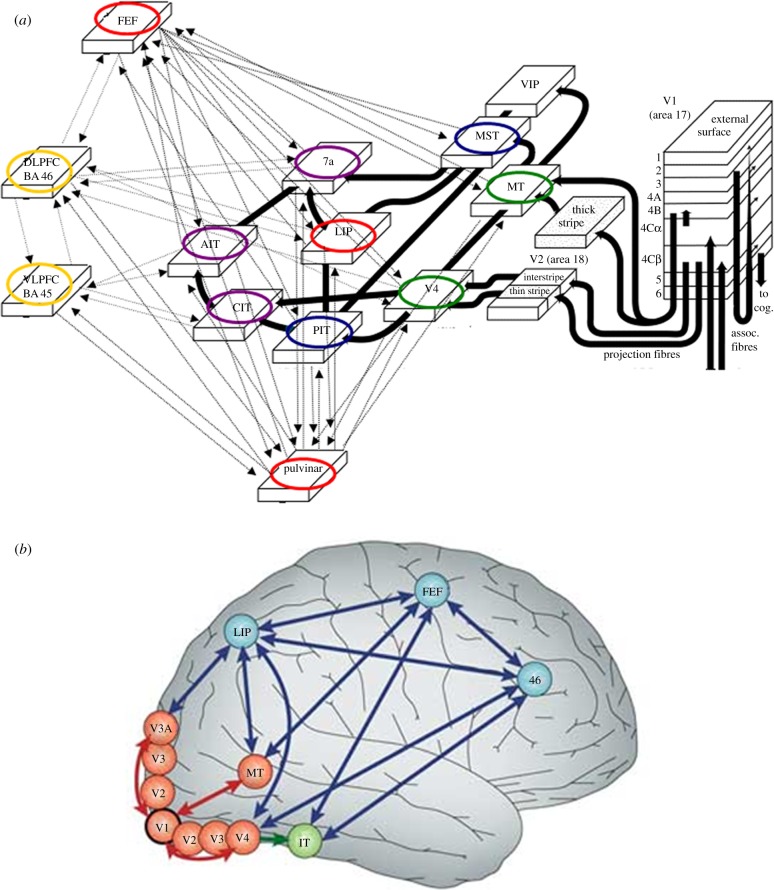Figure 1.
The visual attentional workspace (VAW), and its connections with the global workspace (GW). (a) Schematic of connections between areas in the visual cortex, at different levels of representation, and areas FEF, BA45 and BA46 in lateral prefrontal cortex, and the pulvinar in the thalamus. Connections involving the FEF, LIP and the pulvinar, as well as GW areas in lateral prefrontal cortex, are depicted with thin lines. Note how area LIP is connected with areas in the two streams of visual cortex, and with prefrontal areas. The core VAW areas, LIP, FEF and the pulvinar, are labelled in black (red online). GW areas are labelled in black with dotted contours (yellow online). Intermediate level areas V4 and MT are labelled in light grey (green online) and higher level areas CIT, AIT and 7a in dark grey (purple online). Areas in between these, PIT and MST, are labelled in mid grey (blue online). Note the recurrent connectivity patterns between visual cortex areas at different levels with both FEF and the pulvinar, as well as the direct connections between higher-level visual areas and GW areas in prefrontal cortex. Note also the connections between FEF, LIP and the pulvinar with GW areas in prefrontal cortex. Finally, note the role of intermediate level areas, such as V4 and MT, in connecting to both pathways and to lower level areas such as V2 and V1. V4 and MT also connect with LIP, FEF and the pulvinar. Feedback connections to lower-level areas such as V2 and V1 are not shown in this panel (adapted from [100]). (b) Illustration of reciprocal connectivity patterns in lateral cerebral cortex involving areas LIP and FEF with area BA46 in dorsolateral prefrontal cortex and intermediate level areas, as well as with area IT for object recognition, in visual cortex. This panel also shows connections with lower level areas, in particular, with V1 (reproduced from [101]). (Online version in colour.)

